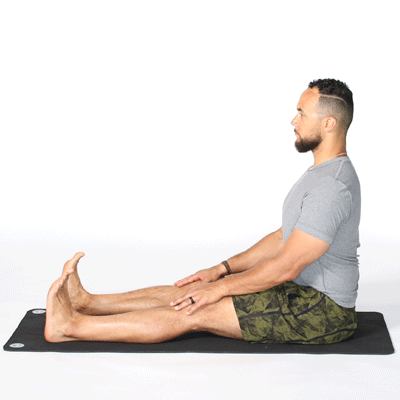
Many people who suffer from depression find yoga beneficial. Yoga can improve awareness and help relieve symptoms. Practicing yoga on a regular basis can help a person with depression get back on their feet and feel better. It can also improve their mood and physical well-being. Yoga can temporarily reduce symptoms of depression and increase overall wellbeing. This article will discuss the many benefits of yoga for people suffering from depression.
Although it isn't known how yoga can help with depression, there are many positive aspects to this practice. The benefits of yoga may be comparable to other forms or exercise for depression. One study showed that participants with major depressive symptoms experienced a reduction in pain and muscle soreness after doing the poses. A second study found that yoga practice reduced worry, rumination and worrying. It also reduced their stress scores and lowered their levels of rumination and worrying. The participants also saw a reduction of anxiety and depression in a second study. They also showed a reductions in their stress levels as well as depressive symptoms.
As one of the most common mental disorders, depression is a serious problem. The treatment for depression usually involves counseling and medication. However, previous studies have found that the combination of these two approaches has better results than either alone. In the present study, the effects of yoga on depression were compared with those of traditional therapies, which are more expensive. As the researchers stated, more studies are needed to find out how much yoga helps a person with depression.

Yoga for depression can help with anxiety and improve sleep quality. Participants also reported increased energy and decreased symptoms of anxiety and depression. Both groups also showed improvements over a period of three months. These results, according to researchers, are encouraging and prove that yoga has long-lasting benefits. Major depression sufferers should consider this type of treatment. The findings of the study are not yet validated. Additional studies are needed in order to verify its efficacy for depression.
People suffering from depression can reap many benefits from yoga. It can improve psychological well-being and help people with depression. It has also been shown effective in stress reduction and anxiety. In addition, the benefits of yoga for depression are both personal and professional. They can also work together to manage the symptoms of the mental illness. They can come together to improve the quality of their lives and prevent social isolation.
Yoga for depression, in addition to helping lower anxiety, can also be beneficial for mental health. In mild depression cases, yoga has been shown that it can reduce symptoms. It also reduces anxiety, PTSD and schizophrenia symptoms. A person suffering from severe mental illness can benefit from yoga therapy. A trained instructor is recommended if you're considering starting a course in yoga for depression.
Recent research has shown that yoga can ease depression symptoms. Yoga can help improve one's well-being and health. Its history has been a key factor in its numerous benefits. The benefits of yoga for depression can be significant. Yoga can improve your body and mind and reduce stress and anxiety. Additionally, yoga can help you focus on your thoughts.

Yoga can help with depression. While it cannot replace conventional treatments, it can be a beneficial addition. Combining meditation with breathing exercises has been shown to have positive effects in many cases. A yoga practice can also help depression sufferers achieve their goals. Yoga can provide significant benefits for sufferers and may even help them find relief from depression.
A person with depression may feel worthless, as they see no hope for a brighter future. Yoga can be a great option for people suffering from depression. It can also help them to manage their weight. Unlike many medications, yoga can be prescribed by a physician or therapist. It is a proven method to reduce the symptoms of depression and improve overall health. It is a way of dealing with the symptoms of the disorder. It's an excellent way to feel healthier both mentally & physically.
FAQ
How often should you exercise per week?
It all depends on how much time and what kind of exercise you like. The general rule of thumb is to exercise aerobically 3 - 5 days per week. It is important to not overdo it. To get the best results from your exercise, it is important to be consistent.
Which exercises are most effective for me?
It all depends on what type of fitness goals you have. Some people focus on endurance activities like running, cycling, and swimming. Others like lifting weights or using resistance band. There are many exercise programs on the market today. Find the best option for you.
What is a good gym routine for you?
To stay fit, you need to exercise regularly. You don't have to do the same type of exercise every day, it doesn't really matter. The most important thing is consistency. You must be consistent if you are to see results.
Begin by walking for a few minutes each day. Start by walking for a few minutes every day. Gradually increase your time exercising to 30 minutes per week. This could include running, cycling, swimming, weight training, yoga, or aerobics classes.
It's important that you get your exercise done every day. Don't skip any sessions unless you have a valid reason for not attending.
Make sure to wear appropriate clothing and footwear for outdoor exercise. You should also consider the weather conditions that could affect your ability exercise safely.
When you exercise, drink plenty of fluids. It is best to avoid alcohol while you're exercising. Caffeinated beverages such as tea, coffee, and cola should be avoided. They will not only give you more energy but also dehydrate you.
After your first exercise, you may feel tired. If you stick with your training program, you'll feel more awake and alert.
What is the fastest way to transform my body?
Your mindset must be changed. You must first decide to change.
Once you decide that you want to change, it is time to set a minimum of 3 months' commitment to your fitness goals.
You will then need to choose a program that is compatible with your lifestyle.
Setting realistic expectations is also essential. If you are not ready to dedicate the time and effort to reach your goal, do not spend money on a gym.
Instead, use your own free time to exercise outdoors.
If you spend an hour a day walking around the block, you'll burn enough calories to lose 1 lb per week.
Now that you are clear about what you want to do, plan how you will organise your life around this plan.
You should make sure you set aside time each morning to exercise and that you take breaks throughout your day to move.
You should also reward yourself for reaching milestones. This could include buying clothes or accessories that reflect your success.
Statistics
- Are You One of the 20% of Guys (mh.co.za)
- According to the American Heart Association, blood pressure should be checked at least once every two years, beginning at age 20. (my.clevelandclinic.org)
- The PRS enabled risk stratification for overall prostate cancer and lethal disease with a four-fold difference between men in the highest and lowest quartiles (HR, 4.32; 95% confidence interval [CI], 3.16-5.89). (pubmed.ncbi.nlm.nih.gov)
- Cardmembers earn 5% Back at Amazon.com with a Prime Credit Card. (amazon.com)
- An estimated calorie range for moderately active adult males falls between 2,200 to 2,800 calories per day, depending on age. (eatright.org)
External Links
How To
How do I lose fat by exercising?
Exercise burns calories through increased metabolism and oxygen consumption.
At moderate intensity, you will lose weight easily.
These are some tips to help you lose fat while working out:
-
Do cardio exercises such as walking, swimming, jogging, cycling, running, or elliptical training.
-
For 30 minutes, do it three times a week.
-
If you want to lose more weight, add strength training to your routine.
-
Avoid intense exercise. You can build muscle and not break down muscle tissue.
-
When exercising, make sure to drink lots of water. Water flushes out toxins and helps keep the body hydrated.
-
After exercising, you should drink low-fat protein drinks. Protein shakes boost energy and repair muscle tissue.
-
Smaller meals are better for you.
-
Don't skip breakfast! Skipping breakfast can make you tired and sluggish.
-
Mental health is important. Stressful situations can slow down metabolism.
-
Keep a positive attitude. Studies show that overweight people are more likely to be obese than those who perceive themselves as attractive.
-
Get enough sleep. It is harder to lose fat if you don't get enough sleep.
-
Be active. Move around at least once an hour.
-
Maintain a healthy diet. Eating right keeps you feeling full and satisfied longer.
-
Relaxation is possible by finding ways to relax. Relaxing doesn't mean your body releases stress hormones which cause muscle tissue to be destroyed.
A balanced diet includes all essential nutrients needed for growth and development.
You should eat six small meals per day rather than three large ones. This allows your body to properly digest what you have eaten.
You need about 500 milligrams of calcium daily to maintain strong bones. Calcium can be found in dairy products such as yogurt, fortified soybean beverages, orange juice, cereals, bread, and cereals.
Calcium is found in green leafy vegetables, beans, tofu, seeds, nuts, and cheese.
Your body needs vitamin D to absorb calcium. Vitamin D is found in eggs yolk, fatty fish and fortified foods.
Vitamin E is vital for your skin's health. Vitamin E can be found in vegetable oils as well as wheat germ oil, peanuts and almonds.
Your body needs zinc for normal immunity function and wound healing. Zinc is found in seafood, oysters legumes meats, whole grains, whole grains and meats.
Zinc deficiency can cause fatigue, loss of appetite, depression, and impaired immunity.
Consuming too much sugar can cause insulin resistance. This causes an increase in blood glucose levels. Insulin resistance leads to weight gain.
High levels of free radicals can lead to insulin resistance. Free radicals can be molecules with unpaired electrons that cause damage to cell membranes.
The most common sources of free radicals include food additives.
Free radical damage can lead to cancer, heart disease, diabetes, arthritis, asthma, and aging.
Eating a well-balanced diet with antioxidants is the best way to prevent free radical damage. Antioxidants protect against oxidative damage.
Vitamin C, beta carotene (found within citrus fruits, carrots, sweet potatoes and spinach), Vitamin E (found inside nuts, olive oils, avocados and eggs), and Vitamin C (found among mangoes.
Selenium, copper as well as manganese and zinc are some other antioxidant nutrients.
Selenium protects cells against oxidative damage from free radicals. Selenium can be found in Brazil nuts and liver, kidneys, liver, kidneys, shrimp, cod, turkey and lamb as well as chicken.
Copper protects the brain and eyes as well as the lungs and red blood cells. Copper can be found in meat, shellfish, meat, and organ meats.
Manganese is an essential component of bone structure. Manganese is found in brown rice, spinach, bananas, prunes, raisins, oatmeal, and lentils.
Zinc is essential for normal growth, reproduction, wound healing, and average growth. Zn is found in lean meats, poultry, white fish and eggs.